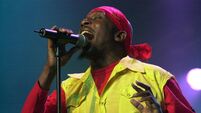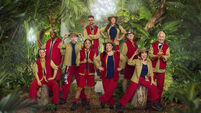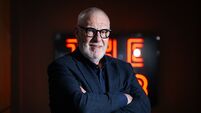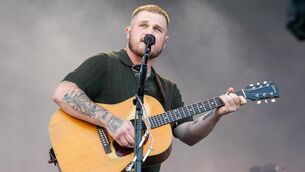Patricia Piccinini: 'I wanted to make this sincere celebration of the blobfish'
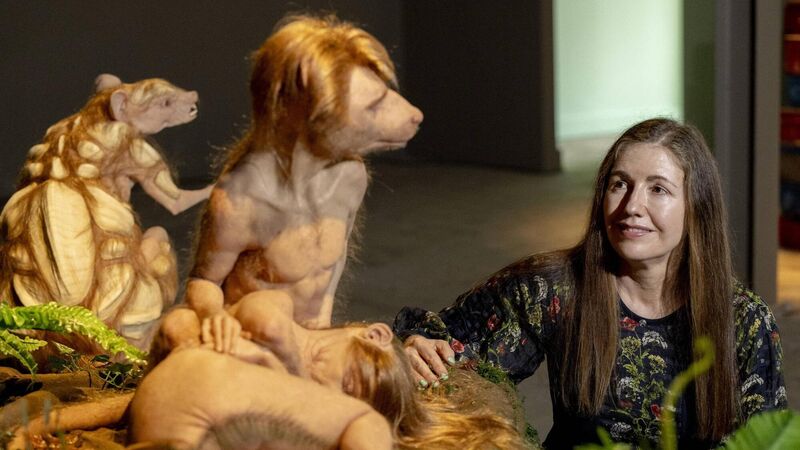
Australian sculptor Patricia Piccinini at the Festival Gallery, at Galway International Arts Festival. Picture:Andrew Downes
It’s no great surprise that Patricia Piccinini has been asked back to Galway International Arts Festival. The Australian artist’s new exhibition, We Travel Together, comes nine years after her first outing at the festival. On that occasion, Piccinini presented an exhibition of sculptures called Relativity, along with Skywhale, a balloon artwork - 100 feet long and 70 feet tall - that hung in the sky over Galway for a whole week.
Skywhale is extraordinary. It has the head of a turtle, a bulbous body and ten udders, and weighs half a ton. The work was commissioned by the city of Canberra, Australia to mark its centenary in 2013, and was made – to Piccinini’s design – by Cameron Balloons in Bristol, at a cost of $300,000. It is now in the collection of the National Gallery of Australia.
Piccinini will not be presenting anything quite as spectacular as Skywhale in Galway this year, but her We Travel Together exhibition will feature a ten-minute film, along with a site-specific diorama featuring a series of sculptures that recall those she showed in 2015.
The film, which lends the exhibition its title, features the Australian actor Jill Nguyen. “Jill is so beautiful,” says Piccinini. “She plays a character who wanders through the natural world but doesn't really connect with it until she meets this creature on the outskirts of a small town. The creature is special because it's not natural, it's artificial. And what the creature does is it re-enchants the environment for her in a way that we find hard to do, because the way we see the environment is in terms of who owns this plot of land, and what can I get out of it?
“But the creature shows her the beauty of the landscape and makes it into a kind of magical space. It's like Jill’s character sees the natural world in this different way, and she falls in love with the creature. But then, as they walk along, they encounter other natural animals, like emus and kangaroos, and she realises that the creature doesn't need her company and love and protection. It needs to be with its own kind, to have its own destiny. And so she lets it go.”
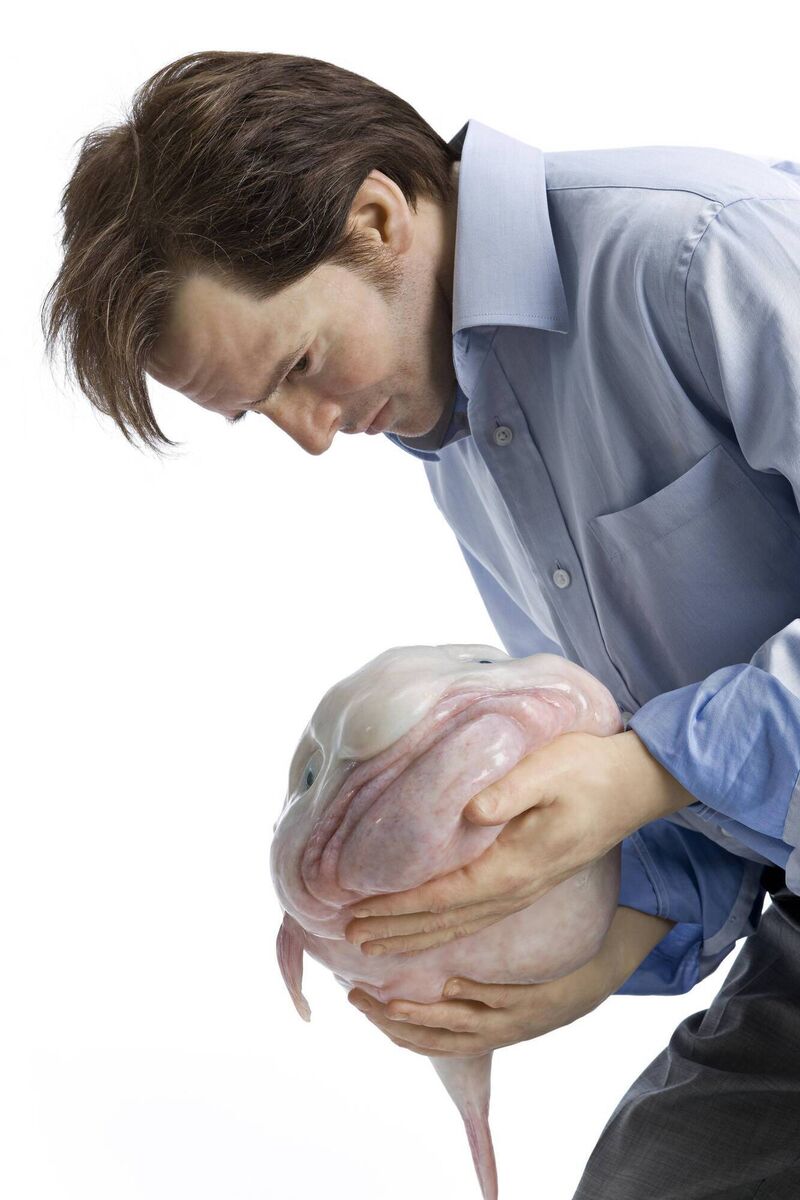
Human beings don’t often feature in Piccinini’s oeuvre, but one of the new sculptures – a work called Eulogy - depicts a man on his knees cradling an extraordinary creature known to scientists as psychrolutes marcidus, and to the rest of us as a blobfish. “I first learned about the blobfish at the Melbourne Museum,” says the artist.
“There were all these people gathered around a picture of it, and because of its ridiculous common name, and the fact that it has what looks like a human face, people made fun of it. But in fact this fish is extraordinary. It lives in the deep seas of South Australia and it doesn't have a shell around it; it has instead a kind of flesh that can tolerate immense water pressure.
“The trawlers pick up the blobfish when they’re fishing for crabs, but they’re inedible, so they just get thrown away. They’re miraculous creatures, but they’re being trawled to extinction. I just wanted to make this very sincere celebration of the blobfish. I think it's the most soulful work in the show.”
Most of Piccinini’s sculptures depict strange hybrid beings, or chimeras, as she likes to call them. Fashioned by the artist and her small team of technicians from silicone, fibreglass, resin and hair, their hyper realism will no doubt startle some viewers, though the artist agrees that her work seems less outlandish today than it did when last she showed in Galway.
“You’re right,” she says. “We're on the verge of a biological revolution, and what seemed inconceivable in science fiction even ten years ago seems a lot more normal now.”
Among the new works is Shadowbat, an inverted creature with a human head and an umbrella of skin on its feet. “This is a piece that came from me spending time in Queensland, where we have a lot of fruit bats,” says the artist.
“Indeed, bats are the most numerous mammal on the planet, but we vilify them. We think they carry diseases, but they're actually just beautiful and extraordinary creatures. They're very fragile. They've evolved to live in specific places and in specific temperatures. In Queensland, the temperature went three degrees above normal for a few days, an outcome of climate change, and there was this giant die-off. All these bats just fell out of the trees because they couldn't tolerate the higher temperatures. Not ten degrees higher, just three. They fell to the ground - about 80,000 of them, I think - and they perished.
“It's amazing that these bats have evolved to be such extraordinary creatures, to make their fingers into wings, for instance. And I thought, what if they evolved to have an umbrella to shield them from the sun? It’s an idea that reflects on the extraordinary evolutionary route they've already taken, and how magical and incredible that has been. The work also talks about how, if we were to intervene, this might be the way we’d do it; by genetically engineering a solution, to provide the bats with toes that become an umbrella rather than doing the hard work of lowering the overall temperature of the whole planet, which would mean us cutting back on our consumption and our technological progress.”
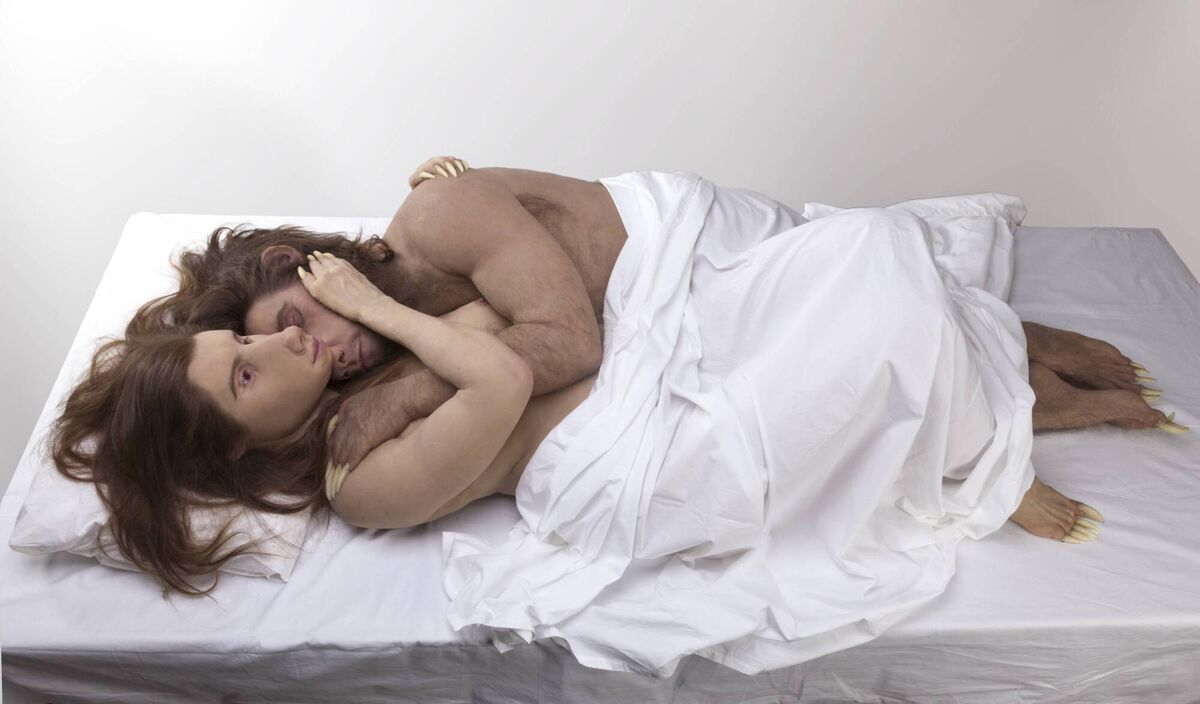
As Piccinini points out, most domestic animals and commercial crops have been bred to suit human needs, but the idea of applying genetic engineering to wild species is still a controversial subject.
“This is a question we face all the time in my country,” she says. “For example, we've lost 80% of our coral reef. It's a huge catastrophe. But now we're thinking about how we can help the coral polyps survive. The polyps have a collaborative life-sharing relationship with the bacteria that live on them, but if they get too hot they expel the bacteria. And when that happens, the polyps starve to death.
"Now some scientists are saying, well, can we help the polyps tolerate the warming seas? Can we develop another kind of bacteria that will help? But other scientists insist we should not do that, because then we'd be intervening with nature, and that wouldn’t really be right.
“There are the questions I’m asking in my work. Is human intervention part of the natural evolutionary process? Should we use our science to help nature evolve so that nature can tolerate our changes to the environment?”
Piccinini believes her sculpture is the perfect medium in which to pose such questions effectively. “The fantastic thing about the work I make is that it can really allow people to suspend disbelief,” she says. “If I tried to describe my ideas in words, they'd be going, well, that's crazy and stupid. But that’s what’s fantastic about silicone sculpture, and that’s why I make it; if people can see the idea in front of them, then it’s conceivable.”
- Patricia Piccinini, We Travel Together, runs at the Festival Gallery, William Street, Galway from July 15-28. Patricia Piccinini is in conversation with GIAF artistic director Paul Fahy at the Festival Gallery at 12 noon, Thursday July 18. Free/Walk-in. Further information: giaf.ie
- Karen Cox, Women of the Thar Desert, Galway City Museum: A photographic study of the women of the Thar Desert in India.
- Yvonne McGuinness, What’s Left Us Then, Festival Printworks Gallery: A film that looks at the use of concrete as a building material in rural Ireland.
- Brian Bourke, Agenbite of Inwit, O’Donoghue Centre and University Art Gallery, University of Galway: Work new and old by the veteran Connemara-based artist.
- Cecilia Danell and Katerina Gribkof, What the Plants Know, 126: Artist-run Gallery An exhibition of paintings, sculptures and textile work from two West of Ireland-based artists.
